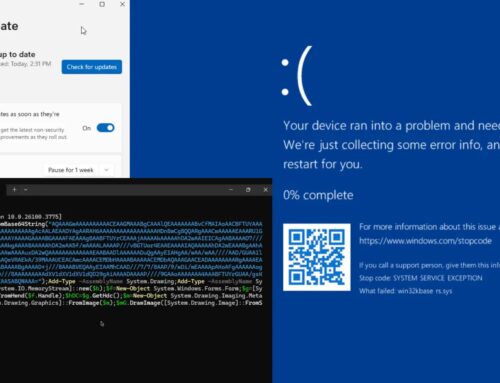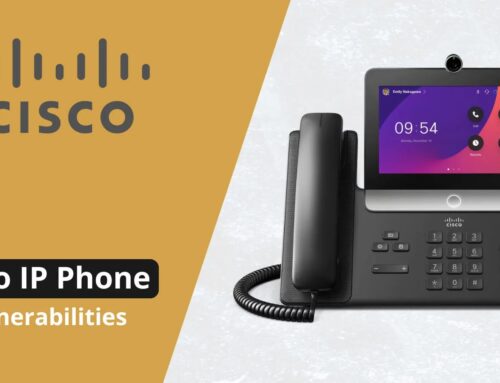
NOVABLIGHT as Educational Tool Attacking Users to Steal Login Credentials and Compromise Wallets
The cyber threat landscape constantly evolves, but few developments are as concerning as a sophisticated campaign masquerading as a benign educational tool. A new and alarming threat, dubbed NOVABLIGHT, has surfaced, deceptively presenting itself as an educational platform while actively orchestrating large-scale credential theft and cryptocurrency wallet compromises. This evolution in cybercrime significantly lowers the bar for perpetrators, making advanced data theft capabilities accessible to individuals with minimal technical expertise.
Understanding NOVABLIGHT: Malware-as-a-Service for Credential Theft
NOVABLIGHT is not merely another piece of malicious software; it represents a significant shift as a NodeJS-based Malware-as-a-Service (MaaS) information stealer. This MaaS model is particularly insidious because it democratizes cybercrime, allowing virtually anyone to deploy advanced data theft capabilities without needing to develop the malware from scratch. The initial campaign details reveal a well-structured operation designed for maximum reach and impact.
The core capability of NOVABLIGHT revolves around the theft of sensitive login credentials and the compromise of cryptocurrency wallets. Its NodeJS foundation provides cross-platform potential, making it adaptable to various operating environments. This versatility, combined with the MaaS delivery model, significantly amplifies its potential for widespread damage.
The Deceptive “Educational Tool” Masquerade
The most striking aspect of NOVABLIGHT is its cunning use of an “educational tool” guise. This social engineering tactic is designed to lower user vigilance, making them more susceptible to interacting with the malicious application. Users, expecting a legitimate learning experience, inadvertently expose their systems to the information stealer. This method bypasses many traditional security awareness trainings that focus on obvious phishing attempts or suspicious attachments, as the initial interaction appears benign.
The allure of a free or novel educational resource can be a powerful draw for unwary users. Once installed or executed, NOVABLIGHT operates stealthily in the background, exfiltrating valuable data without immediate indicators of compromise visible to the average user.
Impact on Users and Organizations: Login Credentials and Wallet Compromise
The primary targets of NOVABLIGHT are user login credentials and cryptocurrency wallets. For individuals, this means direct financial loss through stolen digital assets and a heightened risk of identity theft. Compromised login credentials can lead to account takeovers across various online services, ranging from banking and email to social media and e-commerce platforms.
- Credential Theft: PINs, passwords, and other authentication tokens from browsers, applications, and operating systems.
- Cryptocurrency Wallet Compromise: Direct access to digital wallets, leading to irreversible theft of cryptocurrencies.
- Data Exfiltration: Broader information collection that could include personal files, system configurations, and other sensitive data.
For organizations, a successful NOVABLIGHT attack on an employee could serve as an initial access vector into corporate networks. Stolen corporate credentials can lead to lateral movement, data breaches, and ransomware deployment. The financial and reputational damage from such an incident can be substantial.
Remediation Actions and Protective Measures
Defending against threats like NOVABLIGHT requires a layered security approach and heightened user awareness. Proactive measures are crucial to mitigate the risks associated with this type of sophisticated information stealer.
- User Education and Awareness: Implement continuous security awareness training that highlights the dangers of downloading software from unverified sources, even if it appears to be an “educational tool.” Emphasize the importance of verifying software authenticity and publisher reputation.
- Strong, Unique Passwords and Multi-Factor Authentication (MFA): Enforce the use of strong, unique passwords for all online accounts. Crucially, enable Multi-Factor Authentication (MFA) wherever possible. MFA adds a critical layer of security, making it significantly harder for attackers to gain access even if they steal credentials.
- Software Source Verification: Only download software from official and trusted repositories (e.g., official application stores, reputable vendor websites). Avoid third-party download sites, torrents, or links received via unsolicited emails.
- Antivirus/Endpoint Detection and Response (EDR): Ensure all systems are equipped with up-to-date antivirus software and advanced Endpoint Detection and Response (EDR) solutions. These tools can identify and block malicious executables and detect suspicious behavior indicative of an information stealer.
- Regular Software Updates: Keep operating systems, browsers, and all installed applications updated to patch known vulnerabilities. Attackers often exploit software flaws to deploy malware. While NOVABLIGHT is delivered directly, system vulnerabilities can aid its persistence or privilege escalation.
- Network Segmentation: For organizations, segmenting networks can limit the spread of malware and contain breaches, even if an initial endpoint is compromised.
- Principle of Least Privilege: Grant users and processes only the minimum necessary permissions to perform their tasks. This limits the damage if a system or account is compromised.
Security Tools for Defense Against Information Stealers
Leveraging appropriate cybersecurity tools is essential in strengthening defenses against threats like NOVABLIGHT.
| Tool Name | Purpose | Link |
|---|---|---|
| Endpoint Detection & Response (EDR) Solutions | Detects and responds to suspicious activities on endpoints, including fileless attacks and exfiltration attempts. | Gartner EDR Overview |
| Password Managers | Generates and securely stores strong, unique passwords, and can highlight reused or weak passwords. | PCMag Best Password Managers |
| Multi-Factor Authentication (MFA) Providers | Adds an extra layer of security requiring more than just a password for verification. | Authenticator Apps |
| Network Intrusion Detection/Prevention Systems (NIDS/NIPS) | Monitors network traffic for malicious activity and can block known attack patterns or suspicious data exfiltration. | Cisco IPS/IDS |
| Vulnerability Management Solutions | Scans for and identifies vulnerabilities in systems and applications, enabling timely patching. | Tenable Nessus |
Conclusion: The Evolving Threat of MaaS and Deceptive Tactics
NOVABLIGHT signifies a concerning trend in the cybercriminal underworld: the maturity of Malware-as-a-Service offerings combined with highly deceptive social engineering tactics. Its emergence as an “educational tool” attacking users to steal login credentials and compromise wallets underscores the need for continuous vigilance and adaptation in cybersecurity defenses. Organizations and individuals alike must prioritize robust security practices, embrace multi-factor authentication, and remain skeptical of unsolicited software, regardless of its purported purpose. The battle against sophisticated information stealers is ongoing, and awareness remains a primary defense.





